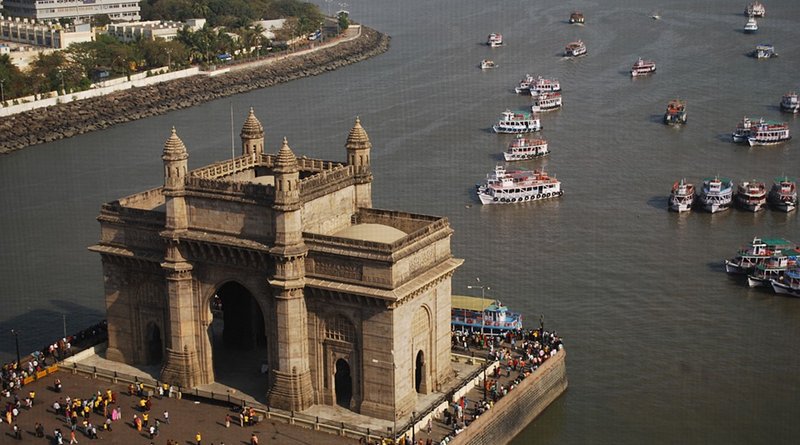India Should Revisit Trade Reforms To Boost Export: Import Intensive Export Should Be Engine For Growth – Analysis
Thirty years ago in July 1991, India launched great economic reforms, including trade and foreign investment. License Raj was abrogated. Trade and investment were opened almost free, except critical items and areas for a greater role to be played by private and foreign sectors. The second part of the reform was made in pursuance to WTO obligations to dismantle remaining quantitative restrictions on imports.
Notwithstanding, all the trade reforms boomed imports and failed to draw a better road map for growth in export . Policy perspective focused on export of conventional items, such as textiles, garments, leather products and handicrafts. But, they rallied behind the expectation to boost the export. Instead, import intensive products witnessed surge in exports , despite Imports continued to reel under high tariff regime . Tariffs remained highest in India as compared to ASEAN.
Exports recorded sparkling growth in petroleum products, electronic and engineering goods , which are import intensive Sarcastic to say, these industries received lesser attentions in the trade reforms.
In 2020-21, petroleum, electronics and engineering goods accounted for nearly 40 percent of India’s export, compared to 14 percent in 1999-2000. Primarily crude oil , which is the base for petroleum products, is imported largely , nearly 90 percent. Similarly, given the dynamic transformation in the economy towards automation and modernization , imports of electronics and telecom equipments became the backbone for surge in growth of exports of electronic and engineering items.
In 2020-21, petroleum products alone accounted for about 9 percent and electronic and engineering goods accounted for over 29 percent of total exports , compared to negligible share and 14 percent respectively in 1999-2000. Together , they accounted for 38 percent of total exports in 2020-21, compared to 14 percent in 1999-2000. Mobile phone alone accounted for one-fifth of total exports of electronic items. Over 60 percent of mobile phone manufactured in India is import based.
In contrary, the industries , which were focused as the export drives, sullied to boost export. Textiles, readymade garments, leather were left in fray without showing any significant growth in export. These products, which accounted for one third of India’s exports in 1999-2000, slipped to one-tenth in 2020-21. Sarcastically, Bangladesh – a much later developed garment industry – excelled India in exports.
Exports of conventional products are subject to frequent protectionism measures by importing countries. Readymade garment export is a case in point. Abrogation of GSP scheme by USA has hurt India’s export of readymade garments to USA. It is the biggest importer of readymade garment from India. It accounts for more than one fourth of India’s total export of readymade garments. With the end of GSP, India’s export of readymade garment slashed to USA . In 2020-21, it declined by over 22 percent.
In contrary, export of drugs and pharmaceutical products to USA increased , albeit COVID 19 pandemic left India under lock down for several months in 2020-21. Export of drugs and pharmaceutical products to USA increased by 14.4 percent in 2020-21.
India should vie Vietnam support for value chain supply to bolster electronic , telecommunication and engineering industries , after China’s value chain industry is in tailspin in the post COVID. India is over dependent on China to make a stronger base for electronic industry. Nearly, 38-39 percent of total imports of electronic and telecommunication equipments come from China.
Vietnam can be a challenge as an alternative to China. Ever since the US-China trade war skyrocketed, many importers in America and elsewhere were revisiting their supply chain from China and moved to other countries. Among them, Vietnam is noteworthy
According to the US Census Bureau, imports from Vietnam into the USA jumped by 33 percent in the first half of 2019. Low labour cost is one of the attractions for investment in Vietnam. It is almost 50 percent lower than in China. Vietnam’s biggest specializations are in the production of electronics, textiles, and furniture. Eventually, electrical machinery, including electronics, are the biggest items of Vietnam’s exports. This translates Vietnam as an appropriate alternative to China. Even though Vietnam cannot catch up with China in terms of large volume and better logistics, one can likely meet a subset of their requirement.
Today, about 70 percent of international trade is driven by GVC ( Global Value Chain). This means raw materials, parts and components and services cross-border numerous times to produce a final product. For example, a smart phone assembled in India might include graphic design elements, computer code, silicon chips , precious metals from several countries. Throughout these processes, the countries engaged in value chain make profits through exports by value addition. These manifest GVC a major channel for export growth in the world, according to OECD.
Economic Survey advocated that India should focus on exports of NP (Network Product) , whose production processes are globally fragmented and controlled by MNCs. The success of these depends as much on capacity to import world class inputs as it does for export. Apple, Samsung, Sony for manufacturing mobile phones in India are the cases in point.
Exports of NP under GVC will boost India’s export growth, according to Economic Survey. Despite making a big success in automobile and mobile phones, India is at low level in exporting NP as against China and Vietnam. NP accounted for 10 percent in India’s export as compared to 52 percent in China and 47 percent in Vietnam in 2018.

